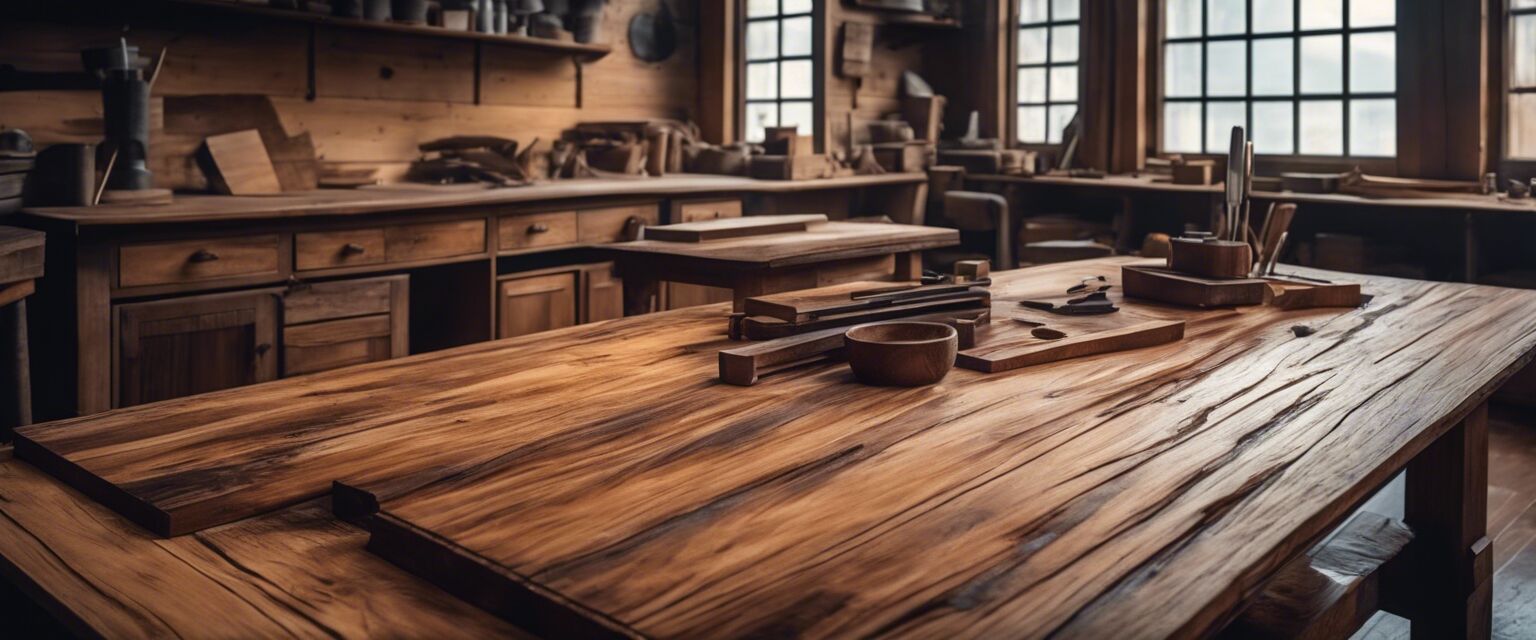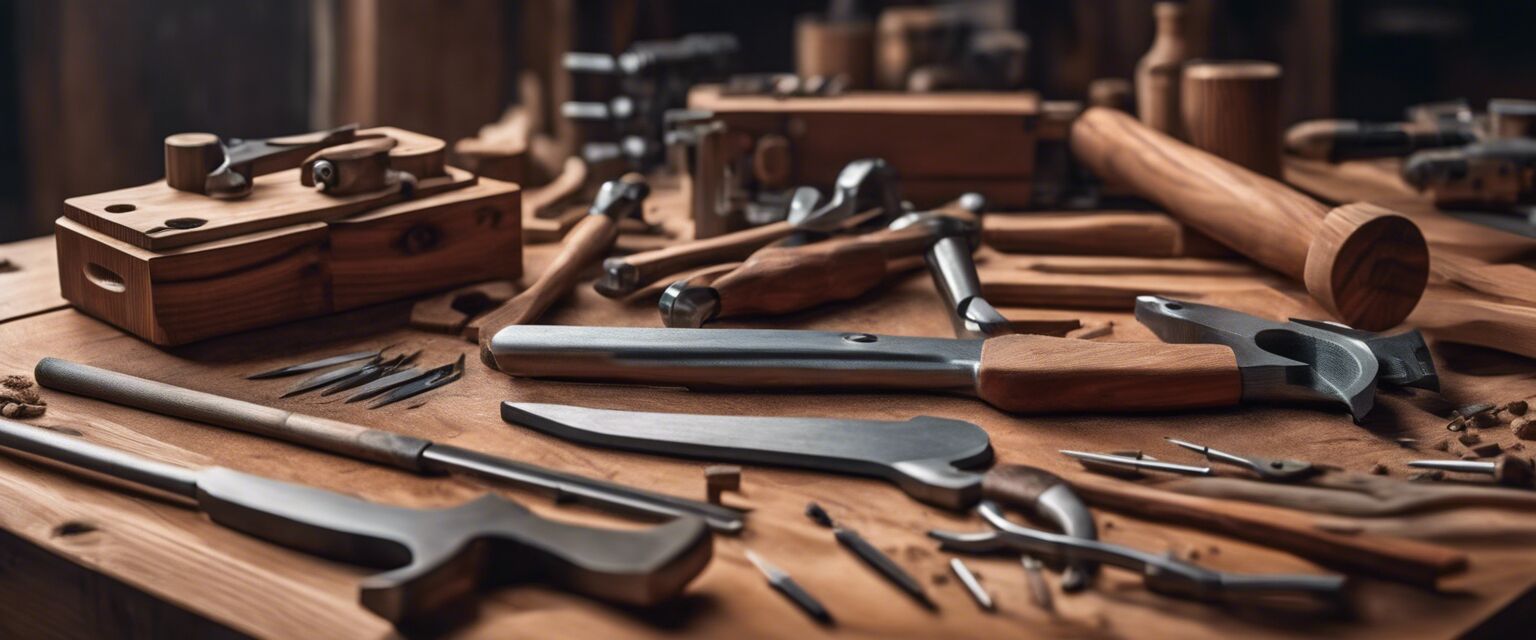
Wood Types and Their Uses
Key Takeaways
- Different wood types offer unique qualities suited for various projects.
- Hardwoods are generally more durable than softwoods but can vary widely in costs.
- Understanding wood grain patterns and characteristics can enhance your woodworking projects.
Wood is one of the most versatile materials employed by artisans and DIYers alike. Each wood species has distinct properties that make it ideal for specific applications. This comprehensive guide explores different wood types, their characteristics, and their uses to help you make informed decisions for your woodworking projects.
Overview of Wood Categories
| Wood Type | Characteristics | Common Uses |
|---|---|---|
| Hardwood | Dense, durable, and often more expensive. | Furniture, cabinets, flooring. |
| Softwood | Lighter, often easier to work with, and less expensive. | Framing, decking, plywood. |
| Engineered Wood | Made from layers of wood fibers or veneers. | Cabinets, furniture, roofing. |
Types of Wood
1. Oak

Oak is a hardwood known for its strength and durability. It has a prominent grain and is available in two primary types: red oak and white oak. Red oak has a lighter color and is more porous, while white oak is denser and more water-resistant.
- Common Uses: Furniture, flooring, cabinetry.
- Advantages: High durability, beautiful grain.
- Disadvantages: Can be costly, may require special tools to work with.
2. Pine

Pine is a popular softwood that is lightweight and easy to work with. Itâs less expensive than hardwoods, which makes it a favorite among DIY enthusiasts. Its natural knots and grain variations add character to projects.
- Common Uses: Framing, furniture, cabinetry.
- Advantages: Inexpensive, readily available.
- Disadvantages: Less durable than hardwoods, susceptible to scratches.
3. Maple

Maple is a very popular hardwood known for its fine, even grain. It is strong and resists wear, making it an ideal choice for heavy-use items.
- Common Uses: Furniture, flooring, musical instruments.
- Advantages: Great durability, beautiful light color.
- Disadvantages: Can be challenging to stain evenly.
4. Cherry
Cherry wood has a rich color that deepens over time, giving it an ornate and warmer appearance. This hardwood is often chosen for its beauty and ease of workability.
- Common Uses: High-end furniture, cabinetry, and decorative pieces.
- Advantages: Attractive color, easy to work with.
- Disadvantages: More expensive, can warp if not properly dried.
5. Birch
Birch is a fine-grained hardwood that is typically light in color. Its smooth texture makes it ideal for a variety of applications.
- Common Uses: Furniture, cabinetry, and plywood.
- Advantages: Affordable, versatile.
- Disadvantages: Less durable than oak and maple.
Comparison of Wood Types
| Wood Type | Density | Cost | Workability |
|---|---|---|---|
| Oak | High | $$$ | Difficult |
| Pine | Low | $ | Easy |
| Maple | Medium | $$ | Moderate |
| Cherry | Medium | $$$ | Easy |
| Birch | Medium | $$ | Easy |
Factors to Consider When Choosing Wood
- Durability: Consider the wood's endurance against wear and stress.
- Cost: Establish a budget and select wood that fits within that range.
- Workability: Choose wood that matches your skill level and available tools.
- Intended Use: Select wood based on what project it will be used for.
- Aesthetics: Determine the desired lookâcolor, grain pattern, and finishing needs.
Tips for Beginners
- Start with softer woods like pine or birch as they are easier to handle.
- Always have the right tools for your specific project to avoid frustration.
- Practice on scraps before working on your main project to gain confidence.
- Donât rush your projects; take time to measure and plan accordingly.
- Consider joining a woodworking class or community for additional tips and support.
Pros
- Wide variety of wood types available for different applications.
- Natural material that is renewable and sustainable.
- Can be shaped, carved, and finished for customized projects.
Cons
- Different wood types vary greatly in cost and availability.
- Working with wood requires specific tools and skills.
- Some woods may warp or crack if not properly cared for.
Conclusion
Choosing the right wood for your project can dramatically affect both the outcome and longevity of your work. By understanding the different wood types, their characteristics, and suitable applications, you can enhance your woodworking skills and create stunning handmade pieces. For more information on finishing products, woodworking accessories, or safe workshop practices, feel free to browse our other sections on finishing products, woodworking accessories, and workshop safety gear.












